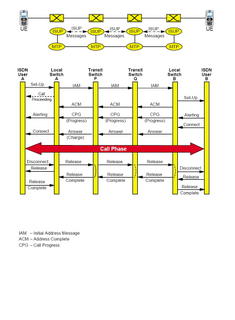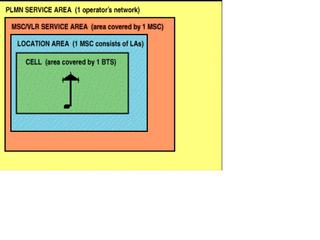Tech blog .....
Tuesday, August 16, 2005
SS7 Signalling layers
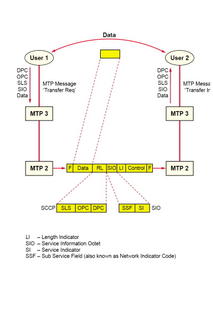
Now let us compare the routing labels in ANSI and ITU
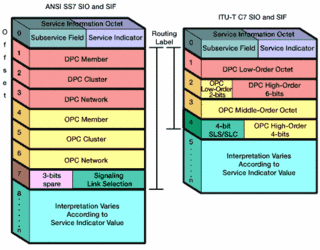
Point code - ANSI 24 bits , ITU - 14 bits
SLS - ANSI 5 bits , ITU - 4 bits
An ANSI routing label uses 7 octets; an ITU-T routing label uses 4 octets.
ANSI point codes use 24-bits (three octets); ITU-T point codes typically use 14-bits. For this reason, signaling information exchanged between ANSI and ITU-T networks must be routed through a gateway STP, protocol converter, or other signaling point which has both an ANSI and an ITU-T point code. (Note: China uses 24-bit ITU-T point codes which are incompatible with both ANSI and other ITU-T networks). Interaction between ANSI and ITU-T networks is further complicated by different implementations of higher level protocols and procedures.
An ANSI point code consists of network, cluster, and member octets (e.g., 245-16-0). An octet is an 8-bit byte which can contain any value between zero and 255. Telcos with large networks have unique network identifiers while smaller operators are assigned a unique cluster number within networks 1 through 4 (e.g., 1-123-9). Network number 0 is not used; network number 255 is reserved for future use.
ITU-T point codes are pure binary numbers which may be stated in terms of zone, area/network, and signaling point identification numbers. For example, the point code 5557 (decimal) may be stated as 2-182-5 (binary 010 10110110 101).
Signaling Link Selection (SLS)
The selection of outgoing link is based on information in the DPC and Signaling Link Selection field. The SLS is used to: Ensure message sequencing.
Any two messages sent with the same SLS will always arrive at the destination in the same order in which they were originally sent. Allow equal load sharing of traffic among all available links. In theory, if a user part sends messages at regular intervals and assigns the SLS values in a round-robin fashion, the traffic level should be equal among all links (within the combined linkset) to that destination.
In ANSI networks, the size of the SLS field was originally 5 bits (32 values). In configurations with two links in each linkset of a combined linkset (totaling 4 links), 8 SLS values were assigned to each link to allow an equal balance of traffic.
A problem arose when growing networks provisioned linksets beyond 4 links. With a 5 bit SLS, a configuration with 5 links in each linkset of a combined linkset (totaling 10 links) results in an uneven assignment of 3 SLS values for 8 links and 4 SLS values for the remaining 2 links. To eliminate this problem, both ANSI and Bellcore moved to adopt an 8-bit SLS (256 values) to provide better loadsharing across signaling links.
In ITU-T implementations, the SLS is interpreted as the signaling link code in MTP messages. In ITU-T Telephone User Part message, a portion of the circuit identification code is stored in the SLS field.
MTP Level 3 re-routes traffic away from failed links and signaling points and controls traffic when congestion occurs. However, a detailed discussion of this topic is outside the scope of this tutorial.
MTP Levels 2 and 1 can be replaced by ATM (Asynchronous Transfer Mode), a simple broadband protocol which uses fixed-length 53 octet cells. MTP Level 3 interfaces to ATM using the Signaling ATM Adaptation Layer (SAAL).
Signalling modes
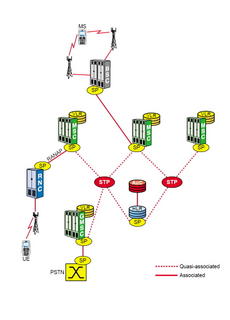
Associated Mode
In the associated mode, the signalling messages for a relation between two nodes
are conveyed over a link directly connecting those nodes.
Quasi-Associated Mode
In this mode a predetermined path is taken by signalling messages. This path transits
an STP and does not directly connect the origin and destination nodes.
The STP functionality (quasi-associated mode of signalling) offers scalability,
resilience and, more importantly for operators, reduced connectivity cost in respect of
the signalling network. The associated mode of signalling may be used by directly
connected SPs.
In the example the Base Station Controller (BSC) is directly connected to the MSC
and uses an associated mode of signalling, whereas the Network Switching System
(NSS) is using the quasi-associated mode of signalling between databases, indirectly
connected by STPs.
Tuesday, August 02, 2005
802.11n New Wi-Fi
TGn Sync and WWiSE are now going to submit proposal to IEEE on 802.11n which can provide you 540 Mbps speed.
WWiSE has won the support of Texas Instruments, Broadcom, Conexant, STMicro, Airgo and Bermai, and later Motorola, which had originally submitted a proposal of its own. Nokia also threw its hat into the WWiSE ring after initially supporting TGn Sync. TGn Sync's supporters include Intel, Atheros, Agere, Infineon, Cisco, Qualcomm, Nortel, Mitsubishi, Sony, Panasonic, Philips, Samsung, Sanyo, Toshiba.
For more details see
http://www.theregister.co.uk/2005/08/01/tgn_sync_wwise_join_forces/
Linux v/s Windows security - real Myth Buster
Please see these links to compare Linux and Windows security comparisons
http://www.theregister.co.uk/2004/10/22/linux_v_windows_security/
http://www.theregister.co.uk/security/security_report_windows_vs_linux/
http://linux.slashdot.org/article.pl?sid=05/07/14/1639242&from=rss
Thursday, July 28, 2005
Tuesday, July 05, 2005
How message routes .... MSC-SCCPR-HLR
Although it seems to be basic but Its good to know how message routing happen between GSM network components (MSC-SCCPR-HLR-MSC)
1. MSC changed IMSI to modified IMSI
2. MSC has configuration that which IMSI range is handled by which SCCP-R -- although now there are plans to have SCCP-R which has all the IMSI on it so now MSC will have only one SCCP-R (Big SCCPR)
3. SCCP-R strips off the modified part and search the HLR which is hosting this IMSI and sends message to it
4. HLR checks "Calling address" to send the response back.
Tuesday, June 28, 2005
Select - timeout
Linux
The select function may update the timeout parameter to indicate how much time was left. The pselect function does not change this parameter.
Solaris
Select does not update the timeout
But it is good practice to set timeout everytime before calling "select"
Usages of select
Select system call prototype -
int select(int n, fd_set *readfds, fd_set *writefds, fd_set *exceptfds, struct timeval *timeout);
where
Four macros are provided to manipulate the sets.
FD_ZERO will clear a set.
FD_SET and FD_CLR add or remove a given descriptor from a set.
FD_ISSET tests to see if a descriptor is part of the set;
" n is the highest-numbered descriptor in any of the three sets, plus 1."
timeout is an upper bound on the amount of time elapsed before select returns. It may be zero, causing select to return immediately. (This is useful for polling.)
If timeout is NULL (no timeout), select can block indefinitely.
So always try to use "n" as (highest_fd+1) -> it will definately improve performance as seen by us on OpenVMS
Wednesday, June 08, 2005
ACPI and APM
There are two types of power managenet: APM and ACPI
APM is older than ACPI .... my toshiba(A75-S206 BIOS) supports ACPI.
ACPI(Advanced Configuration and Power Interface) ::
"(ACPI) An open industry standarddeveloped by Intel, Microsoft, and Toshiba for configuration and power management."
I am still quite new to this but , what I want is a applet which uses ACPI. I am Gnome user which is having a applet uses APM not ACPI. I don't know if it has applet which is using ACPI.
KDE has "Klaptop_check" which uses ACPI , which is quite good. I don't know how I start loving Gnome.
Thursday, May 26, 2005
Mplayer installation .. Fedora core 3
None of the default player with fedora support DVD/VCD etc.... I installed Mplayer with Blue Skin. Now I am able to use gmplayer after installing Skin at DATADIR.
It supports .VOB, MP3 but still not able to play .DAT file. But overall Mplayer is a good player. Whenever I tried mplayer for .dat file it says "Seek failed".
You can download the mplayer and its skins from
"http://www.mplayerhq.hu/homepage/design7/dload.html"
Few things for installation ....
1. It requires Skin for gmplayer , No default Skin is provided by default
2. Copy Skin in "default" Skin directory - Easy way
